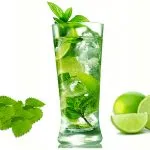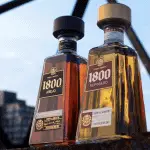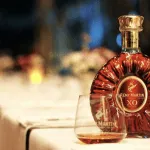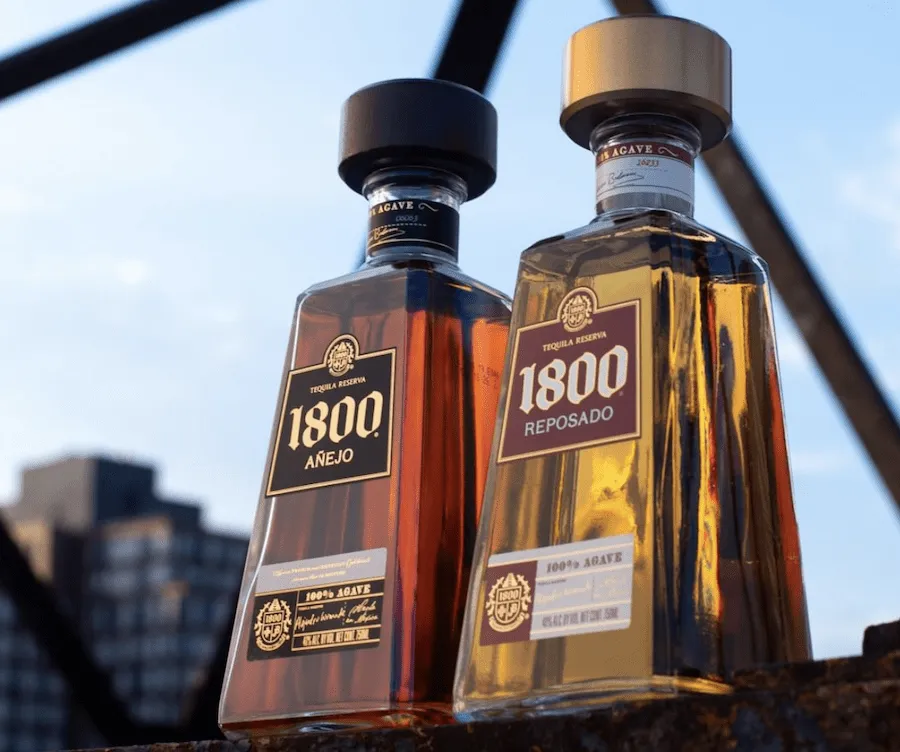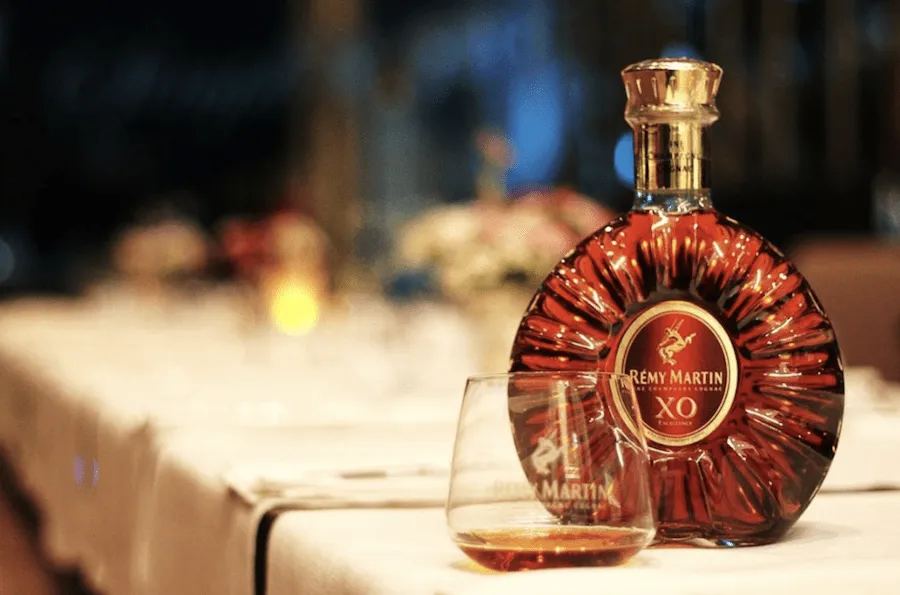Introduction to Rum
Rum is a distinctive spirit revered for its rich history and diverse styles. Originating from the Caribbean, it is traditionally made from molasses, a by-product of sugarcane refining, although some rums also derive from fresh sugarcane juice. The spirit is synonymous with islands like Barbados and Jamaica, where the climate lends itself perfectly to sugarcane growth and, subsequently, rum production.
Rum comes in various age statements, with aged rum taking on more complex flavours as it matures in barrels. This maturation process is akin to that of other spirits such as whiskey, but rum’s unique characteristics differentiate it significantly. Unlike gin, which is botanical, or tequila and vodka, which are typically unaged, rum offers a spectrum—from light and mixable to deep and sippable.
This spirit has witnessed an evolutionary journey, at times competing with other globally dominant spirits in sophistication and diversity. Its versatility is evident in its ability to be enjoyed neat, as part of a cocktail, or used as a staple in cooking and baking.
The value of rum is variable, dependent on factors such as brand, age, and production methods. From premium aged expressions that command higher prices to more accessible flavoured varieties, rum caters to a wide range of palates and preferences.
Here’s a brief look at typical categories of rum:
- White Rum: Often used in cocktails due to its lighter flavour.
- Dark Rum: Known for a bolder taste attributed to longer ageing.
- Spiced Rum: Infused with spices, offering a distinct aroma and taste.
- Flavoured Rum: Includes additional flavours such as coconut or mango.
In essence, rum’s spectrum is as rich and varied as its storied history, offering a style for every enthusiast and a price point for every budget.
The Science of Rum-Making
Rum-making is an intricate process grounded in science and tradition, from the selection of raw materials to the complex distillation and ageing practices that create its distinctive tastes and aromas.
Distillation Process
The distillation of rum involves heating the fermented sugarcane juice or molasses to produce alcoholic vapours, which are then condensed back into a liquid. This can be done using either pot stills, which are known for yielding full-bodied rums with robust flavours, or column stills for a smoother, purer spirit.
Aging and Maturation
As rum ages in barrels, typically oak, it acquires flavours such as caramel, vanilla, and coconut. Climate plays a key role; for instance, rum aged in the hot and humid conditions of the Caribbean will mature more quickly than one aged in a cooler climate, due to the enhanced interaction between the wood and the spirit.
Categorisation of Rum
Rums are categorised by colour and strength. Light rum is typically milder, while dark rum has a richer flavour. Overproof rum is much stronger in alcohol content, sometimes reaching up to 80% ABV.
Notable Production Regions
Major rum-producing regions include the Caribbean islands like Jamaica, Barbados, and Puerto Rico, as well as countries such as Cuba, Haiti, Nicaragua, and Panama. Outside of the Caribbean, nations like Australia also contribute to the global rum market.
Ingredients and Flavourings
Primary ingredients in rum include molasses and sugarcane juice. Flavourings such as cinnamon, citrus, and tropical fruit can be added to create spiced and flavoured rums.
Regulations and Standards
Rules governing rum production vary by region but generally include regulations on the types of barrels used for ageing and the minimum ABV content allowed in the final product.
Global Market Overview
The rum market is diverse, encompassing both economy and premium rum options. Innovation and trends in flavour and production techniques continually shape the industry.
Innovations and Trends
Innovation in rum-making is reflected in the adoption of new techniques such as accelerated ageing and experiments with different barrel types to achieve unique flavour profiles.
Debate on Additives and Purity
Discussions on rum purity often involve the use of additives like caramel or sugar to enhance colour and sweetness. There is debate over the use of such additives and their declaration on labels.
Rum in Popular Culture
Rum holds a storied place in popular culture, often associated with maritime history and featured prominently in cocktails like the Daiquiri, Mojito, and Mai Tai.
Celebrated Mixologists and Personalities
Influential figures like Joy Spence and Trudiann Branker are acclaimed for their craftsmanship and contributions to the rum industry.
Environmental and Ethical Considerations
The rum industry faces challenges related to sustainability and ethics, with an increasing focus on environmental impact and fair labour practices.
The Art of Rum Tasting and Pairings
Rum tasting involves appreciating the aroma and flavour profile of the rum, with aged varieties often enjoyed neat or with simple pairings to enhance their complexity.
Awards and Recognitions
Rum brands are often acknowledged for their excellence with awards at international spirit competitions, validating the craftsmanship of their production.
Bartending Techniques and Tips
Advanced bartending techniques highlight rum’s versatility in cocktails, with emphasis on presentation and the balance of flavours.
Rum Festivals and Tours
Festivals and tours offer enthusiasts immersive experiences to explore rum’s rich heritage and enjoy tastings within the community.
Rum Collecting and Investment
Fine and rare rums are becoming sought-after collectibles, with some bottles appreciating in value, making rum collecting a viable hobby or investment.
Impact of COVID-19 on the Rum Industry
The COVID-19 pandemic impacted the rum industry by disrupting supply chains and altering consumer behaviour, necessitating adaptive strategies from producers.
Rum Brands and Prices
Rum enthusiasts can find a variety of brands that cater to a range of tastes and budgets. Here is a selection of popular rum brands with their average price range:
| Brand | Style | Average Price (USD) |
|---|---|---|
| Bacardi | White/Gold | $12 – $20 |
| Captain Morgan | Spiced | $15 – $25 |
| Malibu | Flavoured | $14 – $18 |
| Mount Gay | Aged | $20 – $30 |
| Appleton Estate | Aged | $20 – $35 |
| Kraken | Dark | $18 – $25 |
| Sailor Jerry | Spiced | $15 – $22 |
| Havana Club | Aged/White | $20 – $30 |
| Don Papa | Aged | $30 – $50 |
| Diplomatico | Aged/Reserva | $30 – $40 |
Prices may fluctuate based on location, bottle size, and whether it is an overproof or standard offering. It’s noteworthy that overproof rums, which contain a higher alcohol by volume (ABV) of around 150 to 160 proof (75% – 80% ABV), can be more expensive due to their increased alcohol content and are often used to craft robust mixed drinks and cocktails.
Flavoured rums like Malibu have carved out a niche in the market, often favoured for their mixability and affordability. Conversely, aged rums such as Appleton Estate and Diplomatico are typically pricier, reflecting the maturation process and the depth of flavour developed over time.
Craft distilleries also contribute unique rum varieties to the market, sometimes commanding higher prices owing to small-batch production methods and artisanal prowess. As for affordability, many rum brands offer a range of products that ensure a decent selection for those with more modest budgets.
Top 20 Rum Brands Analysis
This section provides an in-depth look at the leading rum brands and a comparative analysis of their prices, offering insights into the value and positioning of each on the market.
Brand Profiles
The rum market is diverse, with brands like Appleton Estate and Mount Gay representing centuries-old traditions in rum production. Appleton Estate, known for its rich and complex flavours, has been a significant player in Jamaica’s rum heritage. Mount Gay from Barbados prides itself on its title as the world’s oldest commercial rum distillery. Newer brands like Ten to One are innovating within the market, offering products like Ten to One Caribbean Dark Rum and Ten to One White Rum that challenge traditional rum profiles.
Flor de Caña from Nicaragua presents itself as an eco-friendly option with a carbon-neutral certification, while Ron Barcelo from the Dominican Republic offers a range of premium rums including the well-regarded Reserva Exclusiva. Goslings, a Bermuda staple, is famed for its Black Seal rum, often used in the island’s signature cocktail, the Dark ‘n Stormy. Another notable entry is Holmes Cay, which curates single cask rums for a discerning audience.
Brands such as Bacardi are ubiquitous worldwide, known for their versatile white rums that are staples in many classic cocktails. Maison Ferrand, with its Plantation Rum series, takes an innovative approach by finishing their rums in different types of barrels, lending unique flavours. The Haitian Clairin Sajous is an example of an artisanal rum reflecting the raw terroir of its origin.
Price Comparison Table
| Brand | Type | Average Price (GBP) |
|---|---|---|
| Appleton Estate | Premium | £25-£150 |
| Mount Gay | Standard/Premium | £20-£100 |
| Ten to One | Contemporary | £30-£45 |
| Bacardi | Standard | £15-£45 |
| Flor de Caña | Eco-Friendly | £20-£55 |
| Ron Barcelo | Premium | £20-£90 |
| Goslings | Standard | £20-£65 |
| Holmes Cay | Single Cask | £60-£200 |
| Maison Ferrand | Innovative | £25-£70 |
| Clairin Sajous | Artisanal | £40-£65 |
The price comparison table indicates a broad range for each brand, reflecting budget-friendly selections through to more upscale, premium rums. For instance, while Bacardi offers accessible pricing for their standard rums, the Appleton Estate range spans a wide budget spectrum, catering to both casual buyers and collectors. Mount Gay sits in a similar space, with options available for both everyday sipping and special occasions. It is evident from the pricing strategies that the rum brands cater to a diverse market, from the affordable to the premium segments.
Understanding Rum Labels
When one selects a rum, understanding the label is crucial for picking the right type for your taste and intended use. Labels often contain key information about the rum’s characteristics, including age, type, and strength.
Deciphering Age Statements
Rum bottles often display age statements, indicating the minimum amount of time the spirit has aged. Age statements can range from a few years to several decades. An aged rum, for instance, might specify “Aged 10 Years,” ensuring the youngest rum in the bottle has matured for at least that period. It is important for the consumer to note that unlike some spirits, the age on a blend of rum might reflect the oldest rum present, rather than the youngest.
Identifying Types of Rum
Rum labels will also indicate the type, giving insight into the flavour profile and production method.
- White rum, often labelled as “light” or “silver,” is usually clear, with a subtler flavour, and is aged for a very short period.
- Gold rum, labelled as “amber,” gains its colour from aging in wooden barrels and has a deeper flavour.
- Dark rum is aged longer and has a stronger, more intense flavour profile with hints of spices or caramel.
- Spiced rum is often infused with spices or fruit flavours, as indicated on the label.
- Overproof rum refers to rums with a higher alcohol content than the standard 40% ABV (Alcohol by Volume).
- Rhum agricole or agricole rum is made from sugarcane juice rather than molasses and will be indicated as such.
ABV and Proofing Information
The label will always include the alcohol content, typically expressed as ABV (Alcohol by Volume). For instance, standard rum is 40% ABV equivalent to 80 proof. However, some rums, like 151 rum, are labelled as overproof and can reach up to 80% ABV or 160 proof, resulting in a much stronger spirit. Understanding ABV and proof is important, especially for those looking to use rum in cocktails, as it will affect the drink’s potency and flavour.
The Role of Rum in Cocktails and Mixology
The depth of rum’s flavours and its central role in mixology underline the spirit’s indispensability in crafting both classic and innovative cocktails.
Classic Rum Cocktails
When one mentions classic rum cocktails, the Daiquiri and Mojito often come to mind. Essential to these drinks is rum’s unique ability to complement a range of ingredients through its robust flavour and enticing aroma, creating a harmonious balance. The Mai Tai, another rum-based hallmark, showcases rum’s versatility in blending citrus and almond notes into a complex, palatable delight.
- Daiquiri: Traditionally combines white rum, lime juice, and sugar.
- Mojito: White rum muddled with mint, lime juice, sugar, and topped with soda water.
- Mai Tai: A mix of rum, lime juice, orgeat syrup, and orange liqueur.
Rum as a Versatile Ingredient
Rum’s adaptability extends far beyond these classics; it is a cornerstone for bartenders in mixology. Different types of rum can impart a spectrum of flavours, from light and crisp notes in white rums, often used in lighter cocktails, to the rich and full-bodied profiles of dark rums, which impart depth and complexity. Overproof rums are integral in providing an extra kick to certain cocktails, exemplified in a bold and flavourful punch.
- Light rums: Excel in delicate, refreshing cocktails.
- Aged rums: Introduce complexity in flavour and aroma suitable for sipping and elaborate presentations.
- Overproof rums: Employed for their potent strength and impact on the overall character of a drink.
Tips for Crafting Rum-Based Drinks
In crafting rum-based drinks, a foundational understanding of rum’s characteristics—flavour, aroma, and how it interacts with other ingredients—is crucial. For an optimal outcome, bartenders focus on:
- The balance of flavours, ensuring no single element overpowers others.
- Presentation, which involves the visual appeal and garnishing that elevates the experience.
When selecting rum for a cocktail, consider the role each ingredient plays, aligning the flavour profile of the rum with the intended taste of the cocktail. Utilising fresh ingredients and appropriate glassware further refines the drink’s appeal and flavour delivery.
Comparing Rum with Other Spirits
When considering rum’s place in the pantheon of spirits, one must take into account its unique characteristics in comparison to other popular distillates such as whiskey, tequila, and vodka.
Rum versus Whiskey
Rum is a spirit distilled from sugarcane byproducts, like molasses, whereas whiskey is distilled from fermented grain mash. The grains used in whiskey can include barley, corn, rye, and wheat. The ageing process profoundly impacts their flavours; rum ages in tropical climates, accelerating maturation and often imbuing a sweeter profile. In contrast, whiskeys such as bourbon or Scotch, develop their distinct tastes from longer ageing in varied climates and the use of charred oak barrels.
Rum versus Tequila
Tequila is a spirit that is specifically made from the blue agave plant in Mexico. Unlike rum, which can be produced anywhere sugarcane is available, tequila has a Denomination of Origin, meaning it must be produced in certain regions of Mexico. Tequila typically carries a fresh, green plant-like quality, with notes that can range from peppery to fruity. Meanwhile, rum offers a spectrum from light and smooth to rich and full-bodied, heavily influenced by its ageing process.
Differences Between Rum and Vodka
Contrasted with vodka, rum’s flavour profile is typically much more diverse. Vodka is known for its purity and lack of a distinctive taste; it is often distilled multiple times to achieve its neutral flavour. Rum, on the other hand, retains a natural sweetness from sugarcane and presents a vast array of flavours, from light and fruity to dark and caramelized, depending on its origin and the methods used in production. While vodka is famed for its versatility in cocktails due to its neutral taste, rum’s varied flavour profiles allow it to shine both in mixed drinks and as a standalone sipper.


